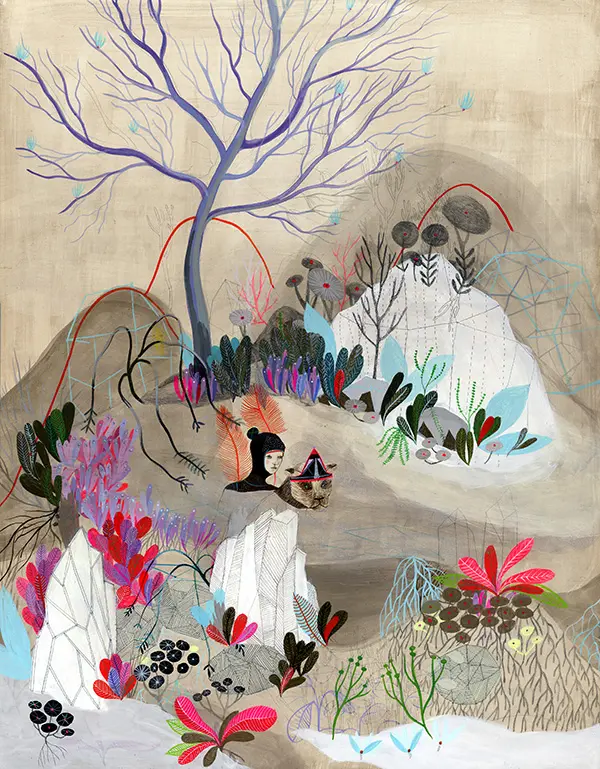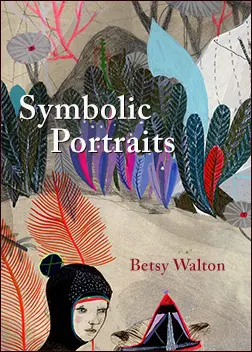Class Description
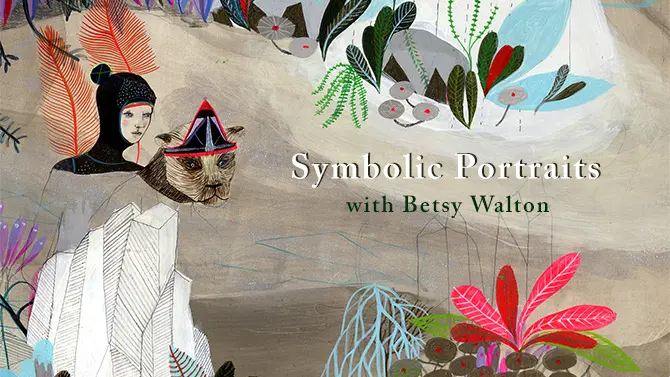
Symbolic Portraits
Teacher: Betsy Walton
Now available as a self-study class.
. . . . . . . . . . . . . . . . . . . . . . . . . . . . . . . . . . . . . . . . . . . . . . . . . . . . . . .
In this class we will build poetic figurative paintings with open-ended narrative elements. During the first three lessons of sketchbook explorations, I will show you my warm up ritual and walk you through some exercises around symbolism, communicating mood and emotion with abstract elements, and developing a sketch for your painting. We will also play with mixing colors and make a beautiful color swatch reference piece… and you will draw your color inspiration from this in your final painting.
In the last three lessons we will start by preparing your wood panel and then you will take your sketch to a final acrylic painting. I will share my typical process of building the painting in many different layers, each one becoming more detailed until the image is complete.
I hope you will join me!
Betsy
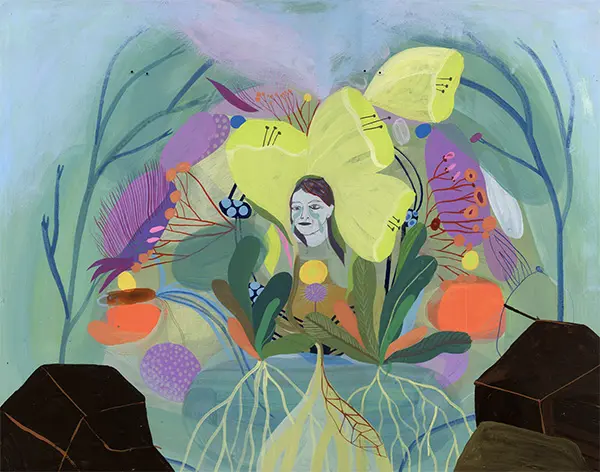
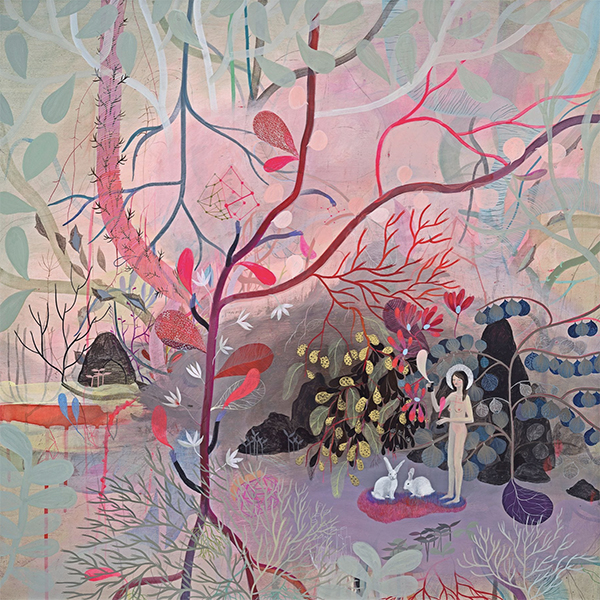
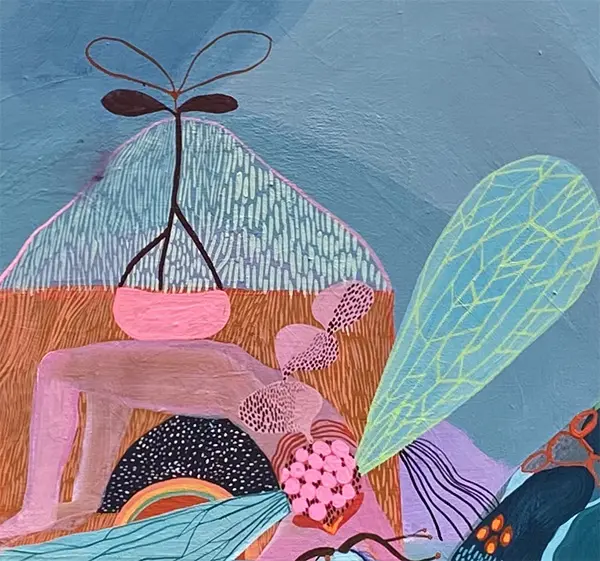
Detail from above painting:
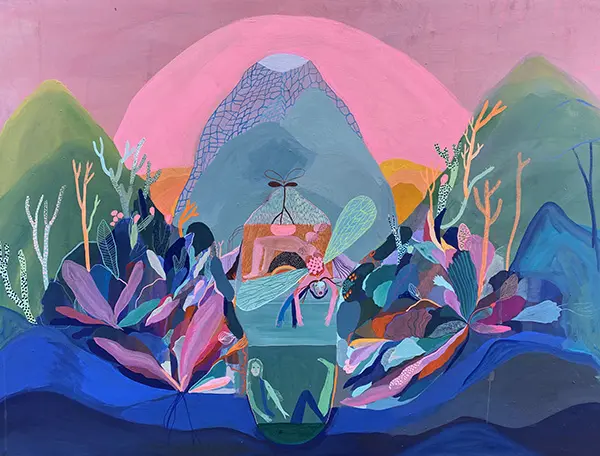
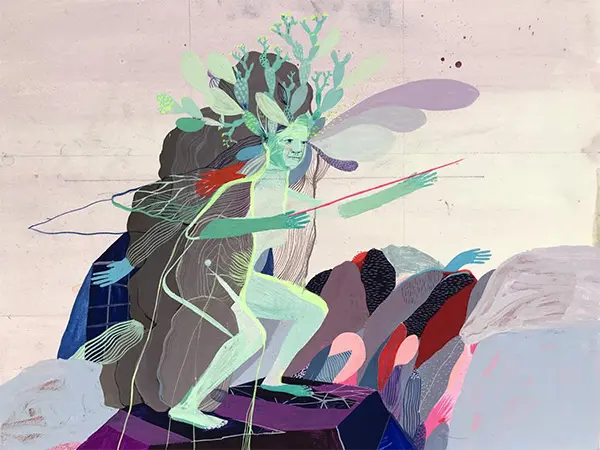
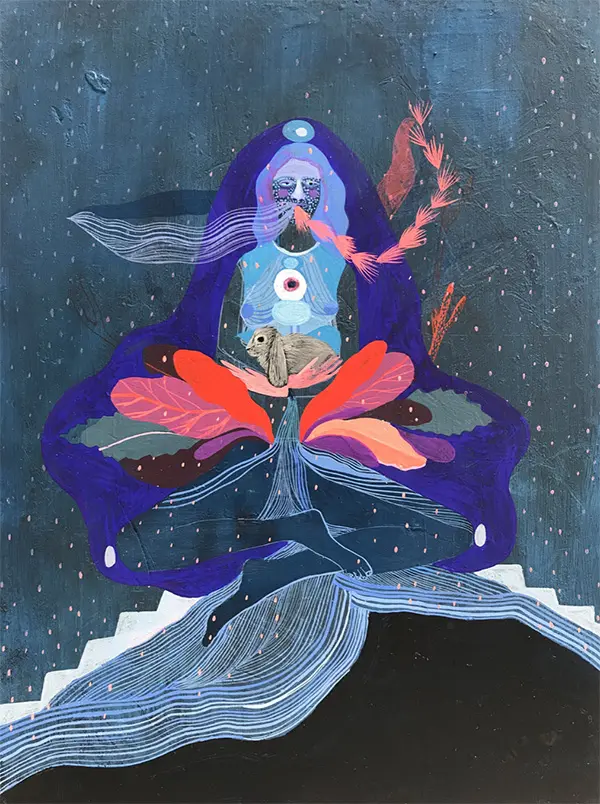
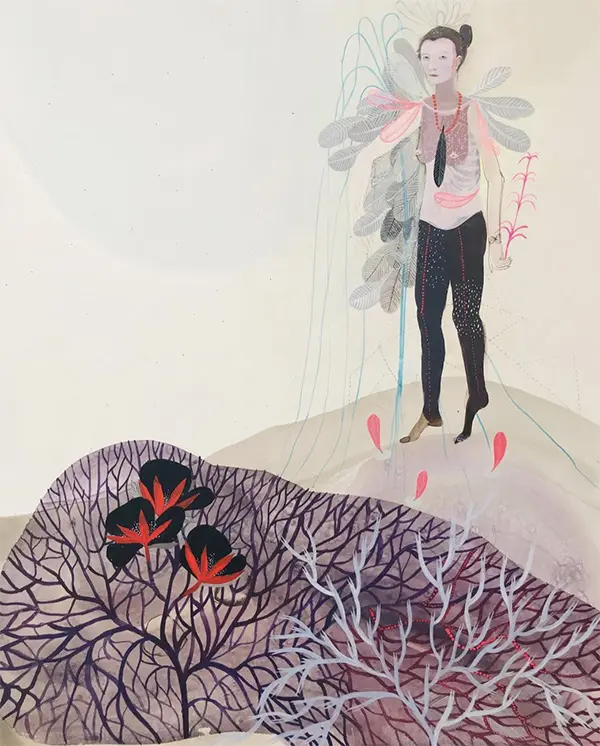
. . . . . . . . . . . . . . . . . . . . . . . . . . . . . . . . . . . . . . . . . . . . . . . . . . . . . . .
Class Itinerary
Lesson 1 – Connect with your intuition and explore mood visually using colors and shapes
Learn a ritual for starting your work session. Use your sketchbook and colored pencils to visually explore emotions, moods, and big themes that resonate with you. Review the list of symbols for future lessons.
Lesson 2 – Symbols Exploration
Pick an environment, a mood, some plants and animals to explore in your sketchbook. Draw from memory or references and research the symbolic meaning of each symbol (optional).
Lesson 3 – Adding the Figure & Color Mixing
Explore figurative drawing in your sketchbook. Consider using references and/or selfies. Think about using the figure’s poses, accessories, etc. to reinforce the mood or narrative element you wish to convey. Practice mixing colors and make a sheet of swatches for yourself.
Lesson 4 – Composition & Structure
Prepare your panel for painting by sealing it and gessoing. Add some washes for background colors; pencil in the composition.
Lesson 5 – Paint the Big Shapes
Refine your composition as you go and think about elements and placements that you want to work towards. Make changes as you go.
Lesson 6 – Details & Finishing Touches
Continue with smaller shapes, adding layers to make things more opaque or to add texture, and work towards high level of detail for the focal points of the composition.
